Steve Coll in The New Yorker:
 When Donald Trump’s second impeachment trial opens this week, the prosecution and defense will spend much time debating whether it is unconstitutional to try a President no longer in office—a dodge Republicans have seized upon to avoid taking responsibility for Trump’s actions on January 6th and to avoid his wrath. With conviction now unlikely, the trial offers Democratic senators and the handful of open Trump skeptics among the Republicans a chance to engrave Trump’s assault on the Constitution into the historical record. But the trial will also be a forward-looking political forum—a preview of how January 6th will figure in electoral competition between Democrats and Republicans, and among Republicans, in the months ahead.
When Donald Trump’s second impeachment trial opens this week, the prosecution and defense will spend much time debating whether it is unconstitutional to try a President no longer in office—a dodge Republicans have seized upon to avoid taking responsibility for Trump’s actions on January 6th and to avoid his wrath. With conviction now unlikely, the trial offers Democratic senators and the handful of open Trump skeptics among the Republicans a chance to engrave Trump’s assault on the Constitution into the historical record. But the trial will also be a forward-looking political forum—a preview of how January 6th will figure in electoral competition between Democrats and Republicans, and among Republicans, in the months ahead.
Trump’s lawyers and acolytes have already made plain some of the political ground they prefer to fight on: the defense of the First Amendment. Impeaching Trump for mobilizing the January protesters with false claims about election rigging “is a very, very dangerous road to take with respect to the First Amendment, putting at risk any passionate political speaker,” one of Trump’s impeachment lawyers, David Schoen, told Sean Hannity on Fox News last week. The initial fourteen-page brief that Schoen and his co-counsel Bruce Castor filed in Trump’s defense mentions the First Amendment five times, aligning its arguments with the “cancel culture” protestations so prominent in conservative discourse: “If the First Amendment protected only speech the government deemed popular in current American culture, it would be no protection at all.”
As a defense against the House’s impeachment charge, however, the legal protections afforded by the First Amendment are largely irrelevant.
More here.

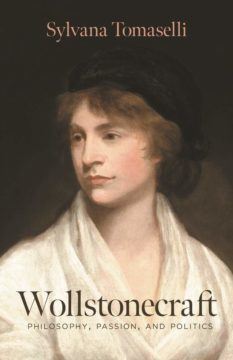 While Mary Wollstonecraft earned her place at the table for pioneering women in Judy Chicago’s art installation The Dinner Party (1974–9), she would not be everyone’s ideal guest. She has a reputation as an acerbic killjoy. She deemed novels to be the ‘spawn of idleness’. She did not embrace women in sisterhood but censured them for their propensity to ‘despise the freedom which they have not sufficient virtue to struggle to attain’. Wollstonecraft has proved both an inspiration and a challenge to those who have come after her.
While Mary Wollstonecraft earned her place at the table for pioneering women in Judy Chicago’s art installation The Dinner Party (1974–9), she would not be everyone’s ideal guest. She has a reputation as an acerbic killjoy. She deemed novels to be the ‘spawn of idleness’. She did not embrace women in sisterhood but censured them for their propensity to ‘despise the freedom which they have not sufficient virtue to struggle to attain’. Wollstonecraft has proved both an inspiration and a challenge to those who have come after her. Once upon a time, I thought that it was perfectly appropriate for restaurant workers to earn less than minimum wage. Tipping, in my view, was a means for customers to show gratitude and to reward a job well done. If I wanted to earn more as a restaurant worker, then I needed to hustle more, put more effort into my demeanor, and be a bit more charming.
Once upon a time, I thought that it was perfectly appropriate for restaurant workers to earn less than minimum wage. Tipping, in my view, was a means for customers to show gratitude and to reward a job well done. If I wanted to earn more as a restaurant worker, then I needed to hustle more, put more effort into my demeanor, and be a bit more charming. George Saunders, now in his early 60s, is a long-standing professor in the MFA Creative Writing program at Syracuse University’s College of Arts & Sciences. Widely recognized as one of the great living practitioners of the short story form, Saunders is a recipient of the MacArthur Fellowship and a winner of the Booker Prize for his first novel, 2017’s Lincoln in the Bardo. I conducted this interview at the end of 2020 in preparation for the release of his first nonfiction standalone title, A Swim in the Pond in the Rain, an eclectic and engrossing text that condenses the experience of workshopping with a master writer well-versed in instruction and invested in the continued development of his own reading acumen. I emailed George the questions, and he replied with alacrity, composing his answers in what I like to think of as the Nabokovian Strong Opinions mode.
George Saunders, now in his early 60s, is a long-standing professor in the MFA Creative Writing program at Syracuse University’s College of Arts & Sciences. Widely recognized as one of the great living practitioners of the short story form, Saunders is a recipient of the MacArthur Fellowship and a winner of the Booker Prize for his first novel, 2017’s Lincoln in the Bardo. I conducted this interview at the end of 2020 in preparation for the release of his first nonfiction standalone title, A Swim in the Pond in the Rain, an eclectic and engrossing text that condenses the experience of workshopping with a master writer well-versed in instruction and invested in the continued development of his own reading acumen. I emailed George the questions, and he replied with alacrity, composing his answers in what I like to think of as the Nabokovian Strong Opinions mode. The machine they built is hungry. As far back as 2016, Facebook’s engineers could brag that their creation ‘ingests trillions of data points every day’ and produces ‘more than
The machine they built is hungry. As far back as 2016, Facebook’s engineers could brag that their creation ‘ingests trillions of data points every day’ and produces ‘more than  In his biggest policy announcement, he said the US government would end support for offensive operations in Yemen. That’s an important step, given the Saudi-led coalition’s disturbing pattern of using US precision weapons and intelligence to hit Yemeni civilian targets such as markets, funerals, and even a school bus. Trump closed his eyes to all that in the name of (illusory) US jobs. Biden rightfully will have nothing to do with it.
In his biggest policy announcement, he said the US government would end support for offensive operations in Yemen. That’s an important step, given the Saudi-led coalition’s disturbing pattern of using US precision weapons and intelligence to hit Yemeni civilian targets such as markets, funerals, and even a school bus. Trump closed his eyes to all that in the name of (illusory) US jobs. Biden rightfully will have nothing to do with it.
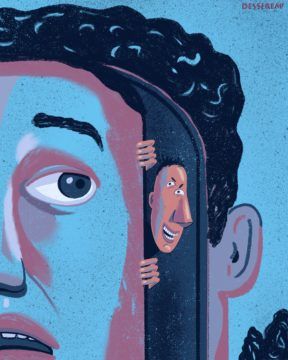 In “The Voice in Your Head,” a darkly comic short film by the writer-director Graham Parkes, a man wakes up every morning to find a fit, hipsterish dope perched next to his bed. “Good morning, fucko,” the dope says. “Ready for another disappointing day?” The camera follows the pair from the shower (“Your penis is very small”) to the car (“You know your dad hates you”) and then to work, where the dope, wearing a pin-striped olive jacket and gold chain, keeps the bit going through lunchtime. (“Eat normal.”) He’s a nuisance, a torment, and not especially original—the kind of bargain-bin hater that makes all the rest of us critics look bad.
In “The Voice in Your Head,” a darkly comic short film by the writer-director Graham Parkes, a man wakes up every morning to find a fit, hipsterish dope perched next to his bed. “Good morning, fucko,” the dope says. “Ready for another disappointing day?” The camera follows the pair from the shower (“Your penis is very small”) to the car (“You know your dad hates you”) and then to work, where the dope, wearing a pin-striped olive jacket and gold chain, keeps the bit going through lunchtime. (“Eat normal.”) He’s a nuisance, a torment, and not especially original—the kind of bargain-bin hater that makes all the rest of us critics look bad. When it comes to pioneers in African American history,
When it comes to pioneers in African American history,  Eric Levitz in NY Magazine:
Eric Levitz in NY Magazine: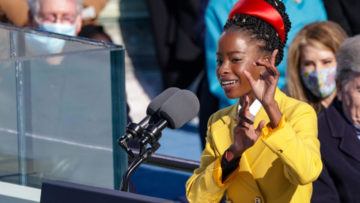 Virginia Jackson and Meredith Martin in Avidly:
Virginia Jackson and Meredith Martin in Avidly: Jessica Boyall in Sidecar:
Jessica Boyall in Sidecar: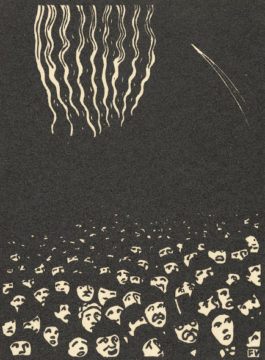 Phenomenal World has releases its first collection
Phenomenal World has releases its first collection 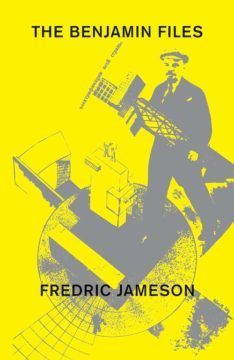 Ian Balfour reviews The Benjamin Files by Fredric Jameson, in the LA Review of Books:
Ian Balfour reviews The Benjamin Files by Fredric Jameson, in the LA Review of Books: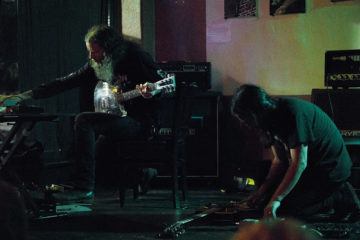 If I had stepped onstage at a metal concert in the late ’80s and announced to the audience that in the future they would be listening to all-synthesizer metal albums, I’d have had enough beer thrown at me to turn in my outfit for a bottle deposit. The metal and noise genres are reputed to be intrinsically rigid, but that’s what makes them so fun, so compelling and infuriating. Nowhere is this more evident than when surveying the totality of Aaron Turner’s work as an artist, musician, and founder of the heavy, influential, and (mostly) defunct label Hydra Head Records. Turner’s present band SUMAC—since its inception on a nonstop tear of activity, including a recent collaboration with Keiji Haino—just released May You Be Held, the latest planet on their horizon of metal.
If I had stepped onstage at a metal concert in the late ’80s and announced to the audience that in the future they would be listening to all-synthesizer metal albums, I’d have had enough beer thrown at me to turn in my outfit for a bottle deposit. The metal and noise genres are reputed to be intrinsically rigid, but that’s what makes them so fun, so compelling and infuriating. Nowhere is this more evident than when surveying the totality of Aaron Turner’s work as an artist, musician, and founder of the heavy, influential, and (mostly) defunct label Hydra Head Records. Turner’s present band SUMAC—since its inception on a nonstop tear of activity, including a recent collaboration with Keiji Haino—just released May You Be Held, the latest planet on their horizon of metal.